- Home
- The Spring Garden
- Peonies
Peonies are Long-lived Perennials that Will Grace Your Garden for Decades to Come.
Peonies have been the subject of art and culture for millennia. Once the privilege of kings and emperors where they were carefully cultivated and jealously guarded in China and Japan, today these abundant and luxurious blooms can be enjoyed by all. It is easy to fall under the spell of these captivating blooms. I think I first caught the bug on a visit to White Flower Farm in Litchfield, Connecticut years ago. I was fortunate to see them at the peek of their bloom in June, and was blown away by their size and beauty and abundance. The first peony I ever bought was 'Mrs. F. D. Roosevelt,' a pale pink with gently overlapping petals. Grace your garden with the beauty of the peony.
If you are interested in learning more about peonies, and meeting other aficionados, consider joining the American PeonySociety. www.americanpeonysociety.org
Herbaceous Peonies
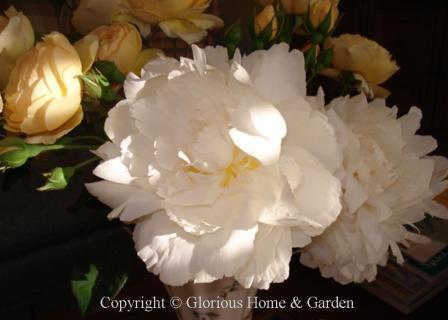
“It always seemed to me that the herbaceous peony is the very epitome of June. Larger than any rose, it has something of the cabbage rose's voluminous quality; and when it finally drops from the vase, it sheds its petticoats with a bump on the table, all in an intact heap, much as a rose will suddenly fall, making us look up from our book or conversation, to notice for one moment the death of what had still appeared to be a living beauty.” Vita Sackville-West
Paeonia lactiflora
Herbaceous peonies are the flowers that come to mind when one thinks of peonies. They are lovely, and most of them are fragrant, though the whites and pinks tend to be the most fragrant. They come in a wide variety of flower forms from single to very full doubles. The very full double types, such as rose and hundred proliferate, are huge heavy flowers requiring staking and do best in northern climes. The simpler and early blooming ones tend to do better in the southern end of the range.
Single: One row of guard petals
Lotus: Two to three rows of guard petals
Chrysanthemum: Four to eight rows of guard petals with yellow stamens in center
Rose: Up to 20 rows of guard petals, very full.
Hundred Proliferate: Very large, even fuller and thicker than rose form
Japanese: One row of guard petals with yellow inner petaloids
Anemone: One row of guard petals with feathery inner petals
Golden Circle: A circle of golden stamens rings the center petals of the bloom
Triple Decker: The center petals are larger, giving a three-layer effect
Crown: One or two rows of guard petals and ball-shaped shorter petals
Bomb: One or two rows of guard petals and tight inner ball of short petals.
Peonies need 8-10 hours of full sun, consistent moisture, with good drainage and rich soil to thrive and become as beautiful as they can be.
Big Ben-red, crown type, mid-season, to 36”, fragrant, introduced 1943.
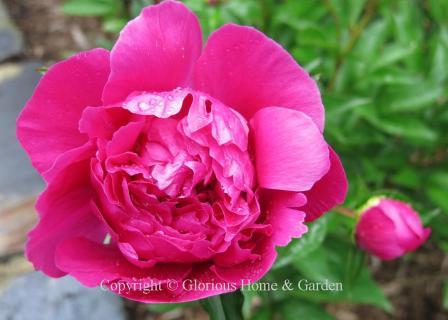 Paeonia lactiflora 'Big Ben'
Paeonia lactiflora 'Big Ben'Bowl of Beauty-pink with center of white staminoids, anemone type, mid-to-late season, 2-3' h., fragrant., introduced 1949.
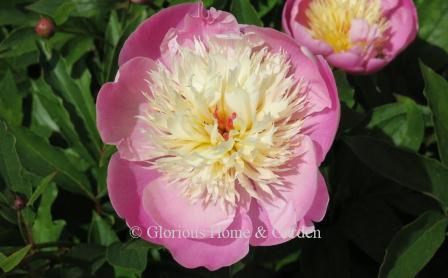 Paeonia lactiflora 'Bowl of Beauty'
Paeonia lactiflora 'Bowl of Beauty'Bowl of Cream-creamy white, rose form, mid-season bloomer, to 31” h., light fragrance, Gold Medal award winner in 1981.
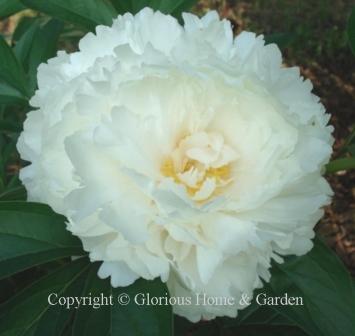 Paeonia lactiflora 'Bowl of Cream'
Paeonia lactiflora 'Bowl of Cream'Coral Charm—absolutely gorgeous color, lovely soft peachy-coral that fades to cream, bowl-shaped with recurved petals, early season, lotus form, to 36”. 1986 Gold Medal winner.
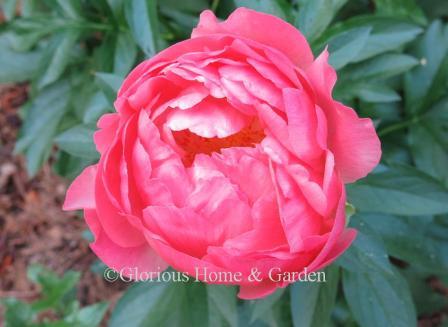 Paeonia lactiflora 'Coral Charm'
Paeonia lactiflora 'Coral Charm'Dawn Pink-deep pink fading to softer pink with yellow stamens, single form, mid-season, to 36”, fragrant.
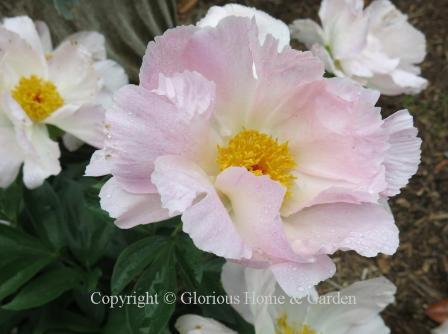 Paeonia lactiflora 'Dawn Pink'
Paeonia lactiflora 'Dawn Pink'Do Tell-shell pink with darker rose-pink and yellow staminoides—very distinctive, anemone form, mid-season, to 32”, Gold Medal award winner in 2004.
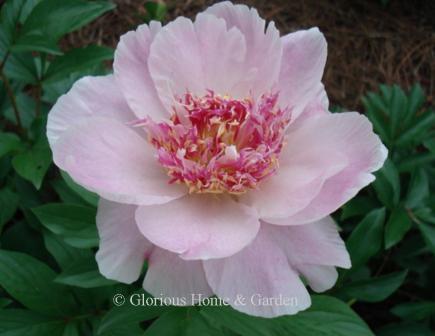 Paeonia lactiflora 'Do Tell'
Paeonia lactiflora 'Do Tell'Festiva Maxima-white with raspberry red flecks, hundred proliferate form, mid-season, to 34”, fragrant. One of the oldest varieties in cultivation, introduced in 1851.
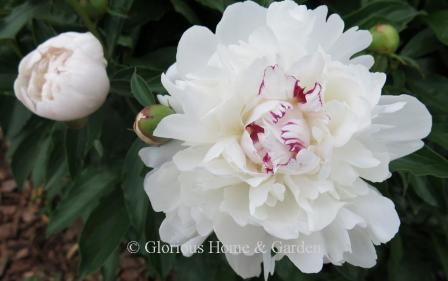 Paeonia lactiflora 'Festiva Maxima'
Paeonia lactiflora 'Festiva Maxima'Isani Gidui-white with yellow staminoides, Japanese type, mid-season, to 34”, not very fragrant.
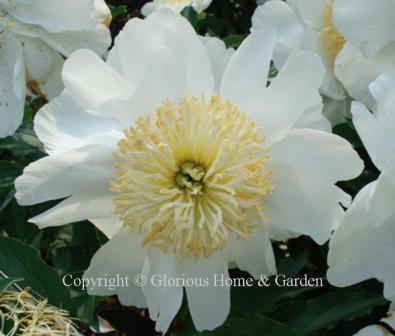 Paeonia lactiflora 'Isani Gidui'
Paeonia lactiflora 'Isani Gidui'Krinkled White-white, single type with crepey petals, mid-season, to 34”, fragrant.
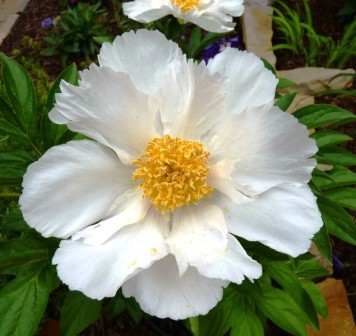 Paeonia lactiflora 'Krinkled White'
Paeonia lactiflora 'Krinkled White'Madame Gaudichau--one of the deepest reds, double form, mid-late season, attractive dark foliage and red stems, from 1902.
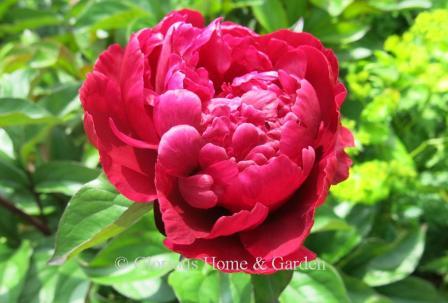 Paeonia lactiflora 'Madame Gaudichau'
Paeonia lactiflora 'Madame Gaudichau'Mons. Jules Elie-pink, bomb form, early bloomer, to 36”, fragrant. Another oldie but goodie introduced in 1888.
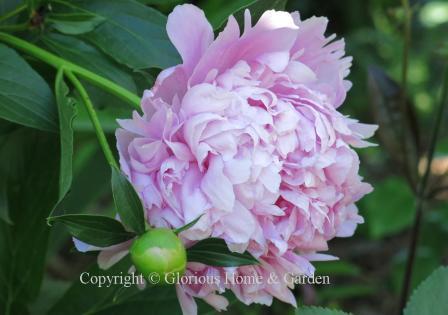 Paeonia lactiflora 'Mons. Jules Elie'
Paeonia lactiflora 'Mons. Jules Elie'Sarah Bernhardt-pink, rose form, late season bloomer, to 36”, fragrant. A luscious peony from 1906.
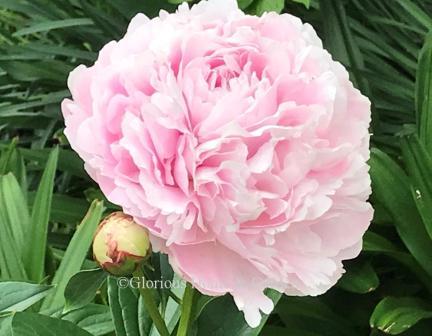 Paeonia lactiflora 'Sarah Bernhardt'
Paeonia lactiflora 'Sarah Bernhardt'Soft Salmon Joy-soft salmon pink, single form, mid-season, 30”, fragrant.
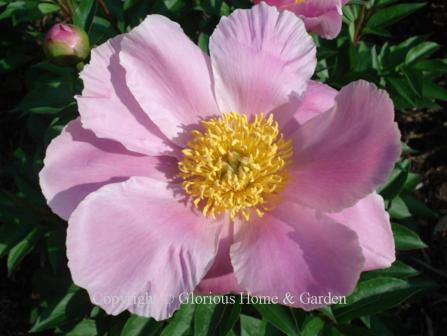 Paeonia lactiflora 'Soft Salmon Joy'
Paeonia lactiflora 'Soft Salmon Joy'White Cap--dark reddish-purple outer petals contrast with a fluffy center of raspberry and ivory petaloids that mature to white, Japanese form, mid-season, 32", fragrant.
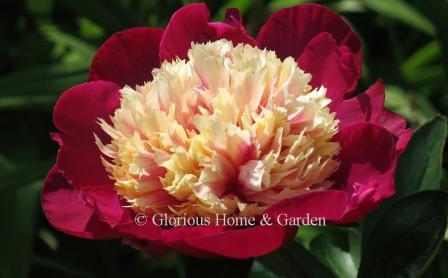 Paeonia lactiflora 'White Cap'
Paeonia lactiflora 'White Cap'Tree Peonies
Paeonia suffruticosa
Tree
peonies are wonderful for their large flowers, fragrance and graceful forms. They make excellent specimens in the
garden. The shapes of tree peony flowers
is broad, and includes single, lotus,
chrysanthemum, rose, crown and bomb types. Tree peonies are deciduous woody shrubs that can reach 5 to 7', and add structure and grace to the garden.
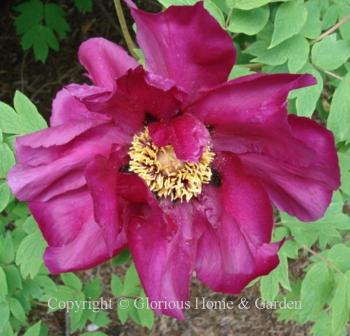 Paeonia suffruticosa,or Moutan peony
Paeonia suffruticosa,or Moutan peony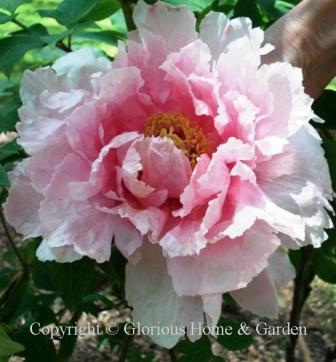 Paeonia suffruticosa 'Hanakisoi'
Paeonia suffruticosa 'Hanakisoi'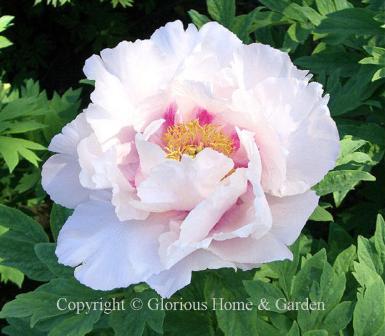 Paeonia suffruticosa, tree peony
Paeonia suffruticosa, tree peonyItoh or Intersectional Peonies
Itoh hybrids were named for Japanese hybridizer, Toichi Itoh, who was the first to successfully cross herbaceous peonies with tree peonies. The hybrids are herbaceous, so they die back to the ground each year, but have the larger blooms, divided foliage, and sturdier stems of the tree peony parent. The yellow color comes from crosses with Paeonia lutea. The Itohs are very useful in the garden for their wide color range, and they bloom after the herbaceous peonies, thus extending the season—and who wouldn’t want to extend the peony season?
'Bartzella'-yellow, double, mid-season, 32”,
fragrant. Gold Medal award winner in 2006.
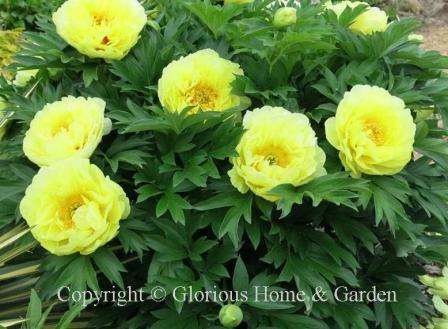 Paeonia x 'Bartzella'
Paeonia x 'Bartzella'‘Cora Louise’-white with dark lavender flares, semi-double, mid-season, 24”.
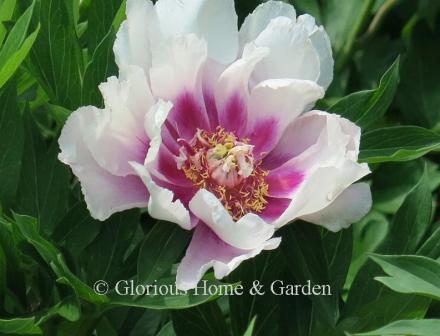 Paeonia x 'Cora Louise'
Paeonia x 'Cora Louise''Keiko'-also known as 'Pink Double Dandy,' is a purely gorgeous combination of cream, lavender and rose. The semi-double to double flowers are large and well-supported on strong stems.
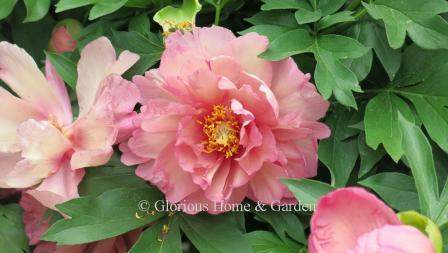 Paeonia x 'Keiko'
Paeonia x 'Keiko'Plant of the Month
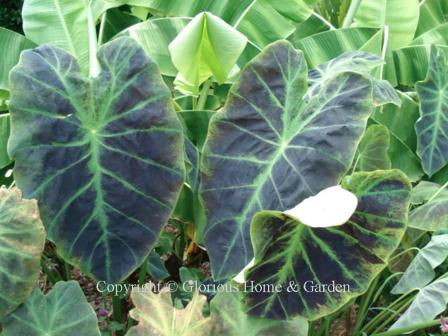
Colocasia 'Illustris'
Updated new USDA Plant Hardiness Zone Map 2023.